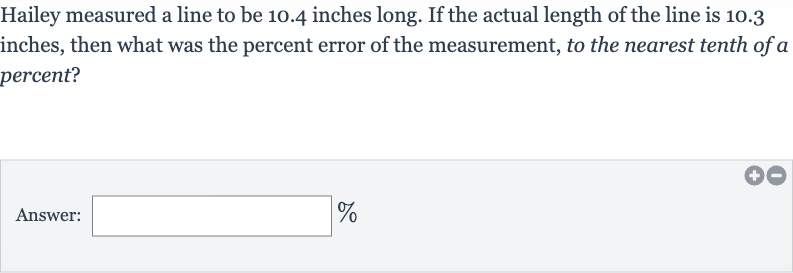AI tutor
Welcome to Bytelearn!
Let’s check out your problem:

Hailey measured a line to be . inches long. If the actual length of the line is . inches, then what was the percent error of the measurement, to the nearest tenth of a percent?Answer:_________
Full solution
Q. Hailey measured a line to be . inches long. If the actual length of the line is . inches, then what was the percent error of the measurement, to the nearest tenth of a percent?Answer:_________
- Understand percent error: Understand the concept of percent error.Percent error is a measure of how inaccurate a measurement is, represented as a percentage of the actual value. The formula for percent error is:Percent Error =
- Identify values: Identify the measured value and the actual value.In this problem, the measured value is inches, and the actual value is inches.
- Calculate absolute difference: Calculate the absolute difference between the measured value and the actual value.Absolute difference =
- Divide by actual value: Divide the absolute difference by the actual value.Divide inches by inches to get the error fraction.Error fraction =
- Convert to percent: Convert the error fraction to a percent.Multiply the error fraction by to convert it to a percent.Percent Error =
- Round to nearest tenth: Round the percent error to the nearest tenth of a percent.Rounding to the nearest tenth of a percent gives us .
More problems from Percent error: word problems
QuestionGet tutor help
QuestionGet tutor help
QuestionGet tutor help
QuestionGet tutor help
QuestionGet tutor help
